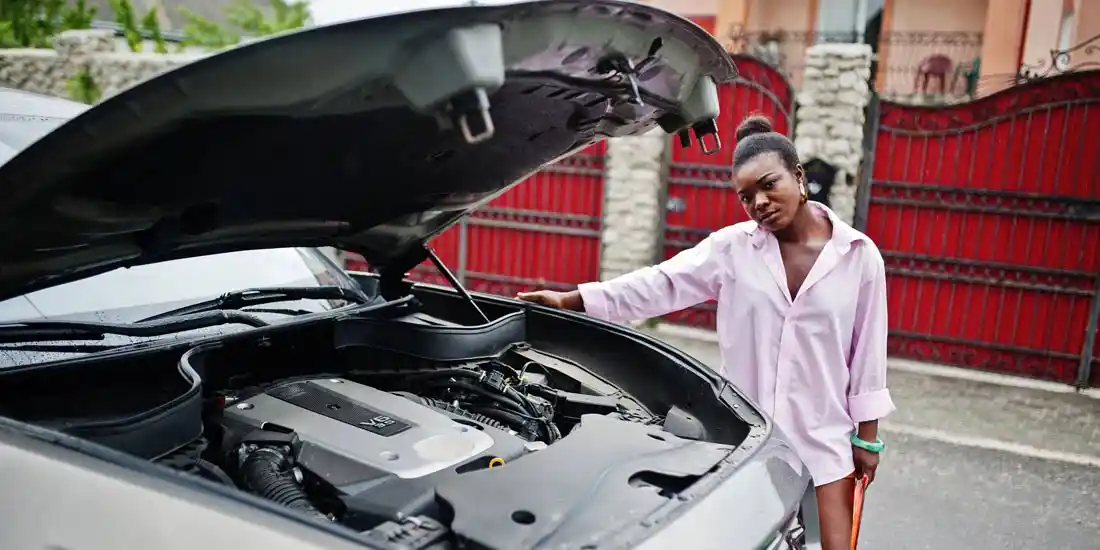
How to Pay for Car Repairs with No Money
10 Min Read
Key Takeaways
- Car repairs can be costly, but insurance, warranties, and roadside assistance can lower your out-of-pocket costs.
- Loans can cover car repair expenses. Compare options carefully and choose one that fits your budget.
- Regular maintenance prevents major breakdowns, saving you money and reducing the stress of sudden repairs.
Finding yourself saying, “I need my car fixed, but have no money,” is a situation many drivers know too well. Breakdowns can affect your daily life significantly if the auto is essential for work or family routines. On top of that, it may be hard to find the needed amount if you don’t have savings.
Repair costs often run high, while over 1 in 5 Americans have no emergency fund. Luckily, there are still some ways to pay for car repairs with no money. Today, we will explore the options available to cover these expenses quickly and without stress.
The Real Price of Car Repairs
Understanding the typical costs you might face when your car breaks down will help you prepare for this kind of emergency. The table below highlights common repairs and their current average price ranges in the U.S.:
| Type of Failure | Average Cost Range* |
|---|---|
| Brake pads&rotors | $550–$630 (per axle) |
| Alternator replacement | $754–$850 |
| Fuel pump replacement | $1,125–$1,247 |
| Transmission rebuild/replacement | $1,200–$5,000+ |
| Engine replacement/overhaul | $2,500–$10,000+ |
| Wheel alignment | $50–$200, depending on 2-wheel vs 4-wheel |
| Spark plug replacement | $370–$430 |
| Power steering pump failure | $844–$943 |
What to Do When Your Car Breaks Down and You Have No Money?
A car breakdown always throws you off balance, especially when your wallet is empty. Fortunately, there are several ways to manage the situation without going into debt.
Insurance Coverage
Start by checking your mechanical breakdown insurance policy. Many drivers don’t even realize that it may include additional services. This could be free towing, roadside assistance, or coverage for a rental car while yours is being repaired. A quick call to your insurance company will help you understand what exactly is covered. Often, these options are already paid for, and you can use them at no extra cost. This is the easiest way to reduce expenses.
Extended Warranty
If your car is still under the manufacturer’s warranty or you have an extended one, some repairs may cost you nothing. Typically, such warranties cover major and expensive breakdowns, such as engine or transmission failures. Check your paperwork or contact the warranty provider to confirm your coverage. In many cases, a single phone call can reveal that a costly repair has already been taken care of, and you won’t have to spend your own money on it.
Free Roadside Assistance
Another option is programs like AAA or similar services. They offer 24/7 help with towing, jump-starting the battery, changing a tire, or delivering fuel. If you already have a membership, use it right away. If not, check for trial or low-cost options. Often, this is enough to solve the problem on the spot and avoid unnecessary spending on a repair shop.
Borrowing from Family
When you have no savings, consider reaching out to friends or relatives for help. While it may feel uncomfortable, this option is often far better than taking on a high-interest loan. Be clear about how much you need and how you plan to repay it. Discussing the terms upfront helps avoid misunderstandings—and loved ones are usually willing to help when they see you’re handling the situation responsibly.
Nonprofit and Government Programs
Local resources, such as nonprofit organizations, churches, and government programs, can provide assistance with car repairs without the need to pay the money back. It may come in the form of small grants, free parts, or help from volunteer mechanics. In some cases, nonprofits may cover part of the cost if you need the car for work. You can also try crowdfunding by sharing your story on a dedicated platform, like GoFundMe. People are often willing to help those who have found themselves in a difficult situation.
Other Emergency Car Repair Assistance Options
If your insurance does not cover the repair, the warranty has expired, and your family cannot help with the full amount, there are still options available. While these involve borrowing, using them responsibly can help you get back on the road without long-term stress:
Credit Card
If you have a credit card with a 0% introductory APR, it can be one of the most cost-effective ways to cover car repair expenses. You can pay for the service immediately and then spread the payments over several months without interest. The key is to pay off the balance before the promotional period ends. When used wisely, this option allows you to borrow temporarily without paying extra.
Payday Loan
A payday loan is a short-term borrowing option of up to $1,000 that you must repay with your next paycheck. Funds are typically available within 24 hours, making it useful for covering small urgent repairs right away. The drawback is the high interest rate, so it’s important to use this option only when you are confident you can repay on time. Consider it a quick way to get back on the road, not a long-term plan.
Installment Loan
An installment loan offers up to $5,000, with payments spread over several months. This structure makes it easier to plan repair costs within your budget. While the interest rate is still higher than that of a traditional bank loan, it’s significantly lower than a payday loan. If you require a larger amount, predictable payments, and more time, this option may be suitable for you.
Personal Loan
Banks and credit unions often provide personal loans of up to $50,000, but you will need a good credit history to qualify. These loans usually have lower interest rates and longer repayment terms, making them suitable for major repairs. If you have less-than-perfect credit, online lenders may still be able to help, although bad credit loan amounts are typically smaller and interest rates are higher. The advantage is speed: many online lenders can approve and fund the loan within one business day.
Title Loan
With a title loan, you use your vehicle as collateral. This means the lender holds your car title until the loan is repaid. Approval is usually fast, and you can often borrow more than with a payday loan. Keep in mind, however, that if you fail to repay the loan, the lender can repossess your vehicle. This is a risky option, but for some drivers it is the fastest way to get back on the road.
Things to Consider Before Paying for Car Repairs
Start by taking an honest look at your budget. Determine how much you can realistically pay each month while still being able to cover housing, groceries, and utilities. That figure is your guideline. It will help you avoid taking on a loan that is too difficult to manage.
Next, explore the more affordable options you already have. You might have a “rainy day” savings account, a credit card with a 0% introductory rate, or insurance that covers part of the expenses.
Then, assess the risks. While a payday loan or a title loan can provide money quickly, they can also result in high final costs, debt cycles, or car repossession if you don’t repay on time. A personal loan from a bank takes longer to process, but it usually comes with a lower rate and a more convenient repayment schedule. However, it requires a good credit history and a stable income.
Also, don’t be afraid to ask for help. Sometimes, family, friends, or local organizations can step in and cover part of the expenses. It can feel uncomfortable to ask, but it’s better than getting into unmanageable debt.
The main thing is not to rush into decisions. Choose the option that really fits your budget, and remember: this is a temporary difficulty. If you approach it calmly and wisely, you will handle the repair without losing control of your finances.
How to Get Auto Repair Loans
If you decide to use a loan for car repair financing, here’s a step-by-step process to follow:
- Compare your options. Look at the products available and go through pre-qualification with several lenders to see potential offers. This will help you choose the one that best fits your situation.
- Gather your documents. Prepare proof of income, employment, residence, and identification. Having recent bank statements and tax returns available can speed up the application process.
- Complete the loan application. You can apply online or at a lender’s branch. At this stage, a hard credit check may be performed. Some direct lenders, however, offer loans with no credit check.
- Review the terms carefully. If you’re approved, take time to read the agreement closely. Pay attention to the annual percentage rate (APR), fees, monthly payment amounts, repayment terms, and any grace periods.
- Receive your funds. Once you sign the agreement, the money will be deposited into your bank account. It usually happens within 24 hours, allowing you to pay for your car repair right away.
How to Avoid Costly and Unexpected Car Repairs
To avoid worrying that you can’t afford car repair in the future, it’s important to start today by keeping your vehicle in good condition. Regular maintenance will help prevent serious and costly repairs down the road:
- Checking and replacing engine oil and filters according to the manufacturer’s recommendations prevents engine wear and reduces the risk of failure.
- Maintaining proper tire pressure and replacing tires approximately every five years (based on tread and condition) not only improves handling but also prevents premature suspension wear.
- Regularly checking brake fluid levels and the condition of brake pads ensures safe driving.
- Inspecting and servicing the cooling system helps prevent engine overheating.
- Testing the electrical system, including the battery and alternator, ensures reliable starting and proper functioning of all electrical components.
Bottom Line
Repairing a car often comes at the most inconvenient times and can put serious pressure on your budget. Before rushing into debt, review all available resources, including insurance, warranties, savings, and community aid. If borrowing is the only option, choose the form of credit you can realistically repay. With careful planning and a measured approach, you can cover repair costs and protect your financial stability.
FAQ
Is it cheaper to buy another car?
In most cases, repairing your current car is cheaper than buying another one, especially if the repair is under $5,000. Buying a used or new car comes with higher upfront costs, taxes, and insurance.
What can low-income drivers do if they need car repairs but don’t have the money?
Low-income drivers can seek repair assistance from programs such as Modest Needs, United Way, or local nonprofits. In urgent cases, they may also consider small loans from credit unions or online lenders.
Are there any car repair help programs for veterans?
Yes. Programs like Operation Homefront, Modest Needs, and VA emergency assistance offer grants or free repairs. Local veteran service groups may also provide financial or mechanical support.
Start your loan application today and handle repair costs with ease!Apply



